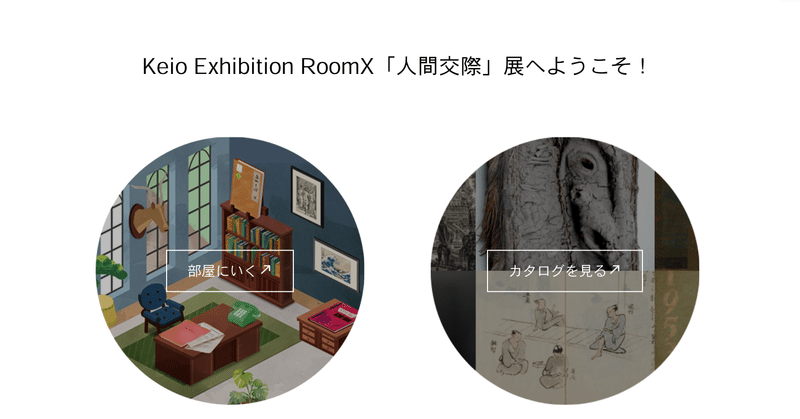
RoomX Exhibition Introduction for My Non-Japanese Speaking Fellows
How are your museum adventures going on these days? I think I just found some jam for you. Have you been visiting any online exhibitions lately? I believe online exhibitions are a great way of keeping you in the civilized world, and gives you a sense of normality, especially during this time.
I am an old soul in the heart. I have never liked digital books. I like holding a book in my hand. I like the touch of paper. Turning pages and writing comments give me enormous satisfaction, which implies that I also like being in the physical space without saying for museums. However, I think I have changed, or to say I have evolved, and there is one particular online exhibition that renders my views on online display. Here I am trying to do the same thing to you. Please bear with me, and I will take you through this mind-changing exhibition with you. After all, I have just spent an afternoon going through this exhibition, and I have learnt a lot. Although this exhibition is in Japanese, it is worth mentioning that it did not elude me from the joy of enjoying it any less.
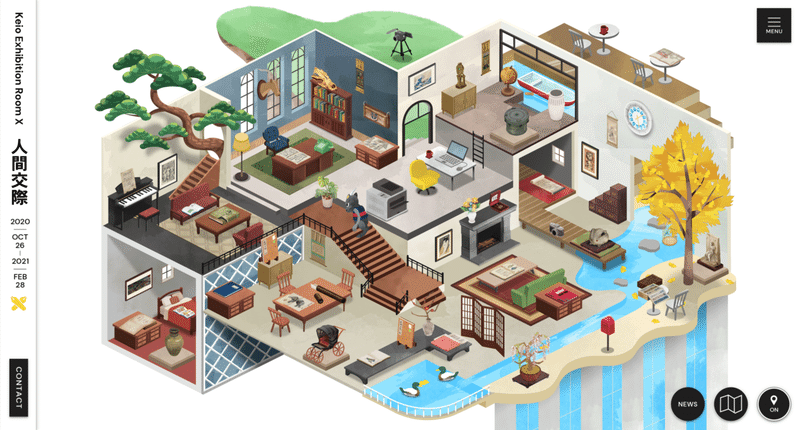
It All Started From Communication.
The exhibition is called Room X, the debut exhibition of KeMCo as a university museum. Room X is curated under the theme ‘Jinkan Kosai人間交際’ which is the translation of society by Fukuzawa Yukichi, the Keio university founder. My understanding of ‘人間交際’ is communication between human beings. Fukuzawa Yukichi visited twice European countries and the USA in his lifetime and applied what he had learnt to found the Keio university. “Banraisha” and “Kojunsha” are two establishments that Fukuzawa Yukichi built with the belief that discussion and communication among various people could help reshape and create a flourishing society.
As a proud Keio person, having a chance to learn these small but significant background information through exhibition fills me with joy and gratitude. Therefore, I strongly recommend my fellow Keio members to take some time and visit this online exhibition. What a great thing that is having a university museum!
I will drop the link here, click it and savour a few hours of proud and solitude.
A Room is Nowhere to be Found But Contains Everything.
Let’s take some time and do some serious appreciation on how well-designed and organised the room is.
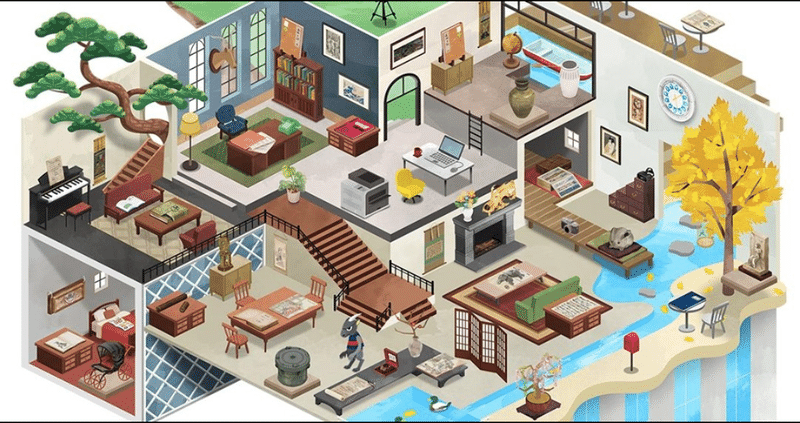
This room sparks tremendous joy for me. When you click on an object, it leads you to the page where the object interpreted in-depth. There might be another link on that page could lead you to even further exploration of that particular object. The room offers a sensation of a culturally-rich scavenger hunt.
Besides the excellent collections displayed in the room, it also has several references to Keio university campuses. Let’s start with the unicorn who seems like to know his way around Room X.

This unicorn is an ornament initially attached to the third-floor balustrade of the Great Hall on Mita Mountain. After the earthquake in 1923, it had moved to the balcony on the third floor above the entrance.
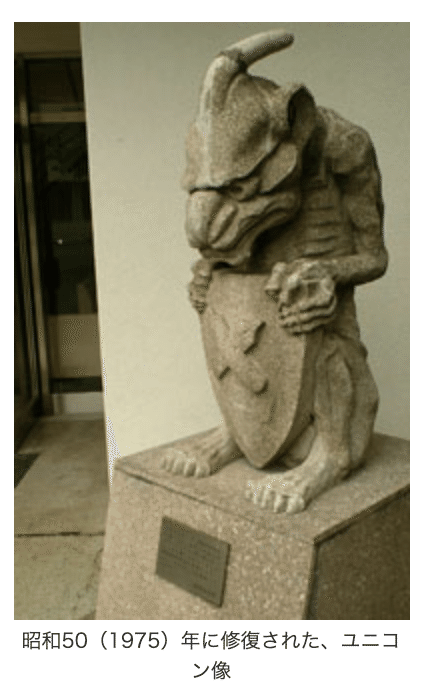
Retrieved from: https://www.keio.ac.jp/ja/about/history/encyclopedia/74.html
If you are interested, there is more information about this unicorn.
The sea-grey wall in the room has an exceptionally significant historical meaning.
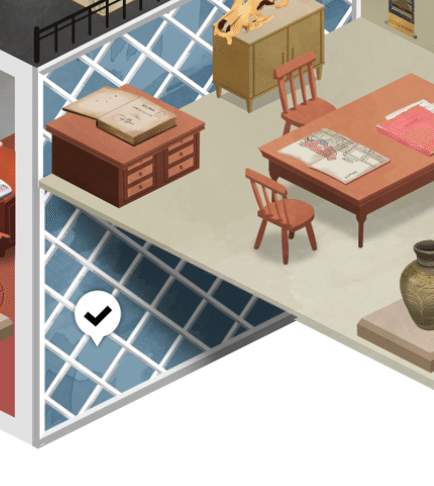
It is the wall of “strained glass” of Mita “Oration hall”, the birthplace of the “speech”. Fukuzawa Yukichi and the Mita Oration group members first introduced the art of oratory to Japan, where it was not customary and popular to express their opinions orally. The Mita Oration hall, built as the exclusive physical platform of the Mita Enshokai, is a cradle of Japanese oratory. The building is an important cultural property which still retains the eclectic style of the early Meiji period.

From https://www.keio.ac.jp/ja/contents/stained_glass/2010/267.html
Of course, you can check it out yourself by clicking the link.
I also managed to find other references from this room. The clock on the wall is hanging on the big building at Mita campus.
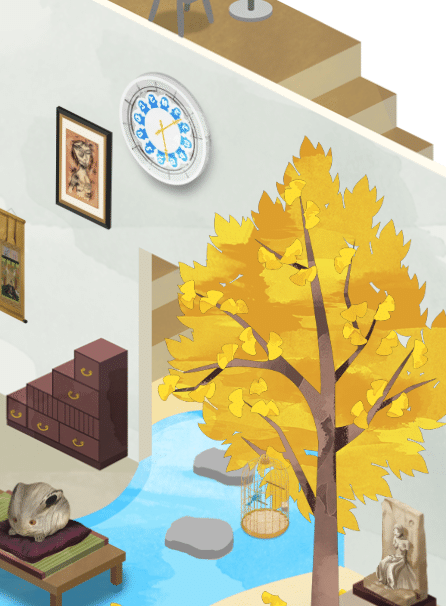
The pond and ducks are references from Shonan Fujisawa Campus, and the big white pillar under the yellow tree refers to the newly completed memory building at Hiyoshi campus.


I had quite a fun time finding these references while studying the room. I challenge you if you could find some other references I have not listed here.
The Soul of the Exhibition——the Collections.
Keio university possesses numerous cultural and historical collections. This exhibition displays 57 objects under the theme “society” arranged in seven sections.
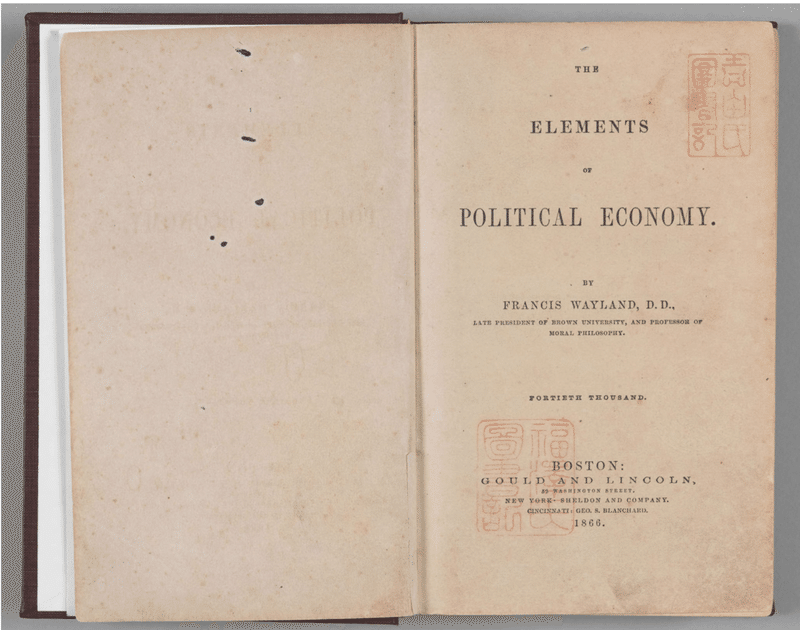
The Elements of Political Economy
I have found quite refreshing that the exhibition explores displayed objects in Room X through a different form of media. There are 3D modelling, videos, text, and images. The images of all items displayed on exhibition are high resolution and complied with IIIF images, which allows you to zoom in and zoom out as you wish. In my opinion, enhanced images help researchers and teachers, but it is an excellent way of observing and appreciating objects from an aesthetic point of view.
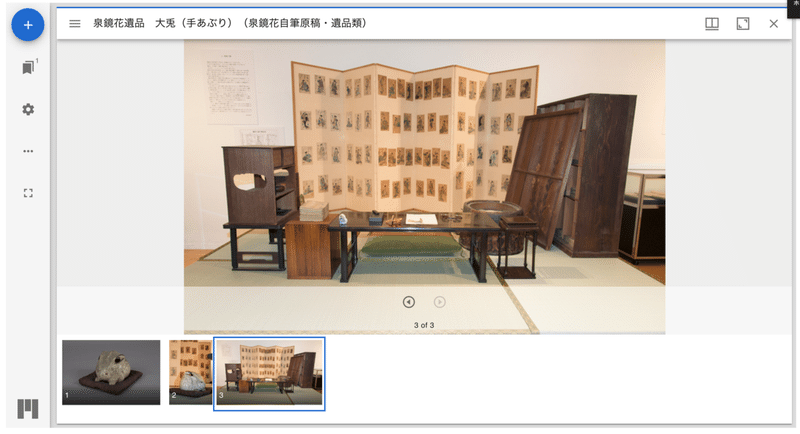
Every object has been allocated in an individual page, where the object is explained comprehensively in-depth form socially, historically, and culturally.
The interpretation structure is clear and easy to understand. When you are directed to Room X's explanatory page, you will see the object's picture and after which follows the factual information such as creator, origins, date and material, etc. Content description ensues closely. If you keep moving the cursor down, you will see the IIIF images, where you can have some fun by zooming in and out, which is quite an experience you could not have if you are physically visiting a museum space. After that, you may spot a highlight session of the object. Each section has its unique highlighted object selected by the attributed university department. The method of highlighting in each section varies from each other. There is 3D modelling, which allows the audience to observe the object from every single angle one could imagine. It is brilliant to see the faded colours on the pram Fukuzawa Yukichi brought back from the USA, even a rarely visible crack on the Okinawa dog bones.
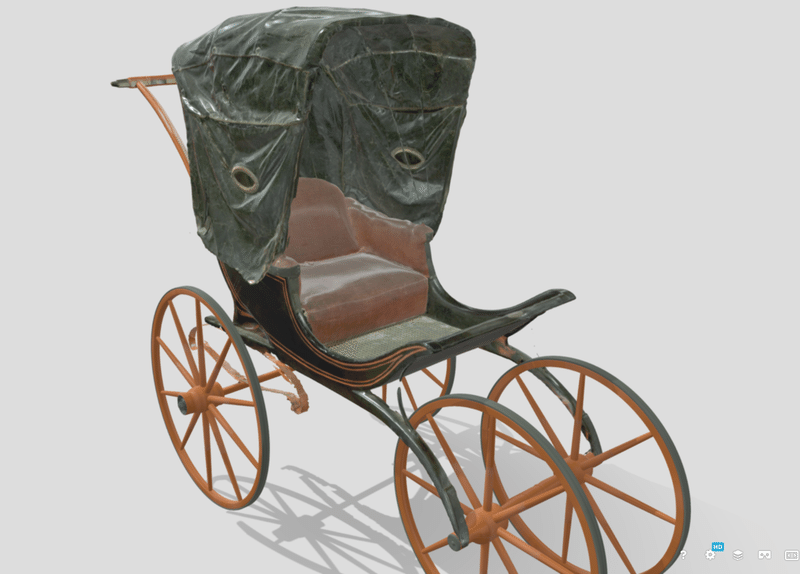

A Newfound Respect for Online Exhibition.
Another highlight method is videos. Several very informative videos in highlights enhance visual stimulation and provide further information about the object. I found it quite a good guideline for deep learning. All information is provided to you by direct and hidden link. ( The one is hidden link I found I think I should be generous and share it with you).
All one has to do is click and enjoy all the adventures. There are hidden links direct you to individual social media pages, such as the one has a bird in its logo, another one with a camera. (I bet you know what I am talking about😏). New exhibition information will be published on those pages. I would say it is worth seeking for those hidden links. Once you found it, remember to follow so that you could stay in the loop.
Of course, in my case, I also needed a lot of translation. But you know what? With all that high technology, I only have to click copy and paste and wait for the translation app to do its magic. The whole time I did not have to worry, I might be standing too long in front of one object, or I might be blocking someone. I was in the flow, there was so much new information, and I could immediately look for them by just clicking the link the exhibition already provided. So I would not forget about them once I back home and turn on Netflix.
I do not know about you, but I have so many memos on my phone that are supposed to remind me to do some detailed research on some artefacts that caught my eye while I was at the exhibition space. But they are just lying there on my phone hoping they could be discovered someday and could fulfil their purpose. I did not need independent research with comprehensively constructed interpretation, all information provided on the exhibition page. I guess that is also one of the charms of visiting an online exhibition. No rush, and at the same time no waiting in line to read the placards. One could stare at the objects as long as one prefers, and from different angles.
The Joke of Jokes——Anecdotes.
Fukuzawa Research Centre attributed the first pram in Japan brought from the USA by Fukuzawa Yukichi on his second visit, Which is also the highlighted object in that section. You can see the pram in detail on 3D view mode. It is brilliant!
It believed that it was the first pram in Japan. And the more exciting story is the pram Fukuzawa Yukichi brought back as a gift for his children is the inspiration for the rickshaw. There is no hard evidence if it is a true story, but it is still quite amusing to let our imagination fly for that direction for a while. You can see the whole story here.
I hope I have done a good enough job of intriguing you to check the exhibition out. Let us know what you think by commenting in the comment section. We would love to hear your opinions.
Written by
Alanur
KeMCo Digital Team Member
PhD Student at Keio University Graduate School of Media Design

